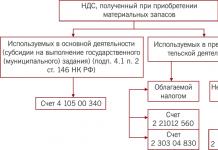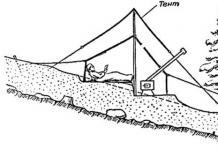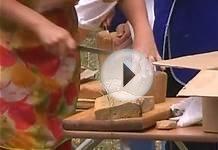7. Organization of labor rationing
At present, the industry systematically uses labor standards established using the analytical method, which is based on the study of the nature and amount of working time costs, which makes it possible to establish its actual costs for the performance of individual working methods, work operations and processes. The analytical method of rationing makes it possible to identify and eliminate the causes of loss of working time, to delve into the technology for performing working methods in order to implement the best of them, and to find the optimal forms of division of labor.
The scientific system for studying the time spent, with the aim of designing labor cost norms (production norms) and measures to improve the use of working time, forms a special discipline - the technical regulation of labor.
Ore cost rates, established analytically, are based on the rational technology of the production process, the scientific organization of labor at a given workplace, and provide for the most efficient use of means of production and working time.
Such norms are called technically justified, and since they focus on best practices and the latest achievements of science and technology, they are also progressive.
Among the technically justified norms of time (production), primary and generalized norms are distinguished.
The primary is the norm, first developed for this process in the production conditions of a particular organization.
A generalized norm is a norm developed on the basis of primary norms that have been tested in the production conditions of a number of organizations and approved as a specific regulatory document (for example, ENiR, VNiR, MNiR, TNiR).
7.1 Types of normative observations
The methods of technical regulation are based on normative observations of workers performing the production process, units or teams of workers, and of the operation of machines and mechanisms.
Regulatory supervision is a one-time (at least half a shift) study of the production process, consisting of the following works:
1) Description of the characteristic of the process.
2) Measurements of the working time of workers or the time of use of machines.
3) Measurements of products produced during the observation period.
4) Primary processing of observation results.
Technical regulation has traditional ways of studying the cost of working time. The block diagram of the classification of the main types of normative observations of labor processes is shown in Figure 7.1. First of all, they should include photo accounting, timing and technical accounting (technical accounting).
Figure 7.1 - Classification of the main types
normative observations
Photo accounting is a type of regulatory observation used for continuous measurements (according to the current time) of all types of time spent in the implementation of production processes.
Photo accounting is the most common method of normative observations. With its help, the costs of working time are studied with an accuracy of recording from 5 seconds to 1 minute.
According to the method of observing and recording the current time, photo accounting is divided into graphic, mixed and digital, and according to the nature of observations - into individual and group.
Graphical and mixed photo accounting are used for observations when the time measurement accuracy is sufficient up to 0.5 minutes. The time spent is recorded on special forms by segments of straight lines related to the corresponding elements of the process.
Graphical photo accounting allows you to record data on the consumption of time by process elements in the technological sequence of their implementation for each performer separately. Also, the quantity of products produced for each work operation and for the observed process as a whole is consistently recorded. In addition, graphic photo accounting is used when monitoring the use of time by machines, the driver or workers working individually (welder, glazier, fitter, etc.). A feature of graphic photo accounting is that the time spent by each performer is recorded by separate lines of different colors. The recording is made on a FG form, which has a grid with 60 divisions, each of which corresponds to one minute.
Mixed photo accounting is the most universal form of time accounting. Its essence lies in the fact that the time during which the individual elements of the process under study are performed is depicted by segments of straight lines, as in graphical photo accounting, and the number of workers involved in the implementation of each element is indicated by a number affixed above the segment at its starting point. The volume of completed products is recorded similarly to graphic photo accounting. This method of photo accounting is used when simultaneously monitoring the work of a group of workers, as well as the operation of the machine. Time is recorded on the FS form. Considering that the forms of the FG and FS forms are similar, it is allowed to use the FGS form for these two types of photo accounting (graphic and mixed photo accounting).
Digital photo accounting is used in the normalization of processes that require high accuracy of time recording or are divided into numerous elements. The number of observed workers in this case is usually no more than two. The time recording accuracy is 5 seconds. Accounting is carried out on the form C.
With individual photo accounting, the time and output of each worker are recorded separately in the process of observation. With group photo accounting, observation is carried out over the work of a link or brigade.
Timing is a study of the duration of the elements of the main work of workers and machines, that is, mechanized cyclic and non-cyclic processes. The duration of the elements of the process is usually measured using a stopwatch, taking into account the time spent with an accuracy of 1 second, and, if necessary, up to 0.2 seconds.
There are two ways to measure time when timing: continuous (continuous) and selective. The most common is the selective method used to normalize cyclic processes with frequently repeating elements.
Continuous timing is carried out with fixing the time of performing work operations in their technological sequence on the C form with a recording accuracy of 0.2 to 1 second. The technique for filling out the C form is the same as for digital photo accounting. Continuous timing is used to study non-cyclic processes performed by one machine or one or two workers.
Timing selective is based on the study of some of the process elements of interest to the observer. At the same time, the researcher fixes not the current time, but the duration of individual operations in a sequence convenient for him. Selective timing is more often used to study mechanized cyclic processes. The duration of one selective timing usually does not exceed two to three hours. This method is simple and accurate. Time is recorded on the XB form with an accuracy of 0.2 to 1 second.
Technical accounting - visual observation of an enlarged nomenclature of elements (with the division of all time costs into two groups - standardized and non-standardized costs), characterized by group recording of time and labor costs with an accuracy of recording time of 5-10 minutes. At the same time, the time spent is recorded graphically, and the number of workers is marked in numbers. Products are measured on the main workflow meter at the end of the observation. Given all of the above, technical accounting should only be used to check the level of compliance with the standards.
7.2 Organization of preparation for the event
Regulatory Observations
Organizational and preparatory work before carrying out normative observations includes the following stages:
1) Organization of the research group.
2) Preliminary acquaintance with the researched process.
3) Establish process standards.
4) The choice of the object of observation and the introduction of the necessary clarifications in the organization of the process.
5) Selection of the type of normative observation, determination of the number and duration of observations.
6) The division of the process into elements, the establishment of fixing points and units of measurement for the production of each element and the process as a whole.
Among the mandatory sources of information that are subject to preliminary study by the research group are the relevant GOSTs, SNiPs, technical specifications (TU) for the production and acceptance of work, catalogs of machinery and equipment, work production projects (PPR) and working drawings, labor protection rules, technological maps , production standards and prices for similar work, tariff and qualification reference books, etc.
Obtaining high-quality initial data largely depends on the correct establishment of the labor process normal, which is an integral part of the norm and a standard for choosing the object of normative observations.
The process normal is a set of the most important factors and conditions for the implementation of the production process. It must be installed taking into account the following requirements:
1) Compliance of the organization of labor and production with the modern level of development of engineering and technology.
2) Full and efficient use of mechanization and automation tools designed to implement a standardized process.
3) Compliance of materials, products, parts and structures with the requirements of SNiP, GOST, local and regional technical conditions (TU) for the production and acceptance of work, the technology of this process.
4) Full compliance with labor protection and safety regulations.
5) Full coverage of normative observations of all works included in the process under study.
6) Ensuring the production of high-quality products.
7) Correspondence of the qualifications of workers performing the process under study, the level of complexity of its constituent operations.
The process chosen as the object of observation must comply with the accepted normal and be carried out in real production conditions. In case of deviation of the actual conditions of the process from the accepted normal, appropriate organizational and technical measures should be planned and implemented to optimize the object of observation.
The type of normative observation is chosen based on the characteristics of the technology and the organization of the normalized process.
All non-cyclic processes, as well as cyclic processes with a cycle duration of 5 minutes or more, should be studied using photo accounting (graphic, mixed or digital).
Cyclic processes with a small proportion of non-cyclic elements (up to 20% of the total labor intensity of the process) are recommended to be investigated using timing (cyclic part) and photo accounting (non-cyclic part).
When carrying out any type of normative observations, the process under study must be divided into constituent elements in the technological sequence of their implementation.
When dividing the process into elements, it is necessary to carefully ensure that the nomenclature of elements takes into account absolutely all the work operations planned for research, listed in the process normal.
It is necessary to divide the process into elements in such a way as to obtain a range of elements that ensure maximum convenience in the production of measurements of primary production.
In the study of mechanized processes, observations can be carried out both separately for the operation of the machine and the work of workers, and jointly. But in any case, separate nomenclature of the elements of the work of the machine and the elements of the work of the executors of the process working with this machine must be drawn up. It is impossible to make a mixed nomenclature of elements of a mechanized process.
At the same stage of preparation for observation, fixing points are determined, denoting the boundaries of each element (operation) of the studied labor process. Signs for determining a fixing point can be established by a clear visual perception of the beginning and end of one or another element of the process.
Before carrying out any normative observation, it is necessary to draw up a process characteristic - an accurate description of all organizational and technical conditions in which the studied labor process is performed. The characteristic should be brief, but with exhaustive completeness reflect the content and all the features of the implementation of the production process under study.
To describe the characteristics of the process, a special HP form is used, which is filled in for each observation separately.
After carrying out all organizational and preparatory measures, they begin regulatory observations.
7.3 Primary processing of the results of regulatory
observations
7.3.1 Non-cyclic processes
Primary processing of the results of normative observations of a non-cyclic process, performed using graphical, mixed or digital photo accounting, consists of two stages:
1) Preliminary calculation of labor costs or time and products for each element of the process and for the observation time as a whole (based on the FGS or C forms).
2) Transferring the results of measuring labor or time, as well as the results of measuring products for all elements of the process recorded during observations, onto a special form of OH (processing the results of observations of non-cyclic processes) and counting the amount of production performed by elements of the process in 60 minutes.
The duration of one observation of non-cyclical processes should be at least half a shift. Therefore, hourly entries on the FGS forms and several Ts forms always need intermediate calculations to transfer data to the ON form. These intermediate or preliminary calculations consist in summing up all labor costs for each element of the process and the time of regulated breaks for the entire observation period.
After preliminary calculations, you can proceed to filling out the OH form.
Filling out the OH form is as follows. At the beginning, the names of all elements of the process under study are entered. Their location in the corresponding column of the form is always carried out in a certain technological sequence corresponding to the established process normal. After that, a group of elements of operational work is underlined, and under the line the results of the calculations of the time spent on it are indicated.
Then, separate lines record the time spent on preparatory and final work, technological breaks and rest (including expenses for personal needs). The group of elements of normalized time consumption is underlined and their total amount is written under the line.
Further, the time spent on unforeseen and unnecessary work, downtime due to poor organization of work and for random reasons, breaks due to violations of labor discipline are recorded. The group of elements of non-standardized time costs is underlined and their total amount is written under the line.
Below this subtotal, a line is again drawn, under which the total amount of time spent on all elements of the studied labor process is recorded.
7.3.2 Cyclic processes
When processing the results of observations of cyclic processes, normative series of time costs for each element and the cycle as a whole are obtained from the completed XB forms. The number of values in the series corresponds to the number of observed cycles.
The purpose of the primary processing of the results of observations of cyclic processes is to obtain average values for the cleaned and improved series.
The processing of the normative series consists of the following steps:
1) Grouping in ascending order of the values of time spent on each element of the process under study obtained from observations.
2) Analysis and basic cleaning of the series by eliminating values that are not related to the established normal.
3) Conducting series checks using mathematical methods and, if necessary, cleaning the series.
4) Determination of average values for the cleared rows.
When checking and cleaning series from random deviating values, methods of mathematical statistics are used.
First of all, the scatter coefficient of the series is determinedKp according to the formula:
font-size:16.0pt">where up- the maximum value of the series;
a1- the minimum value of the series.
If the received value TO Rdoes not exceed 1.3, which means that the series does not require cleaning. If TO R> 1.3, but not more than 2.0, to check the series, it is necessary to apply the limit value method. If K p> 2.0, the series is checked using the mean square error method.
Checking the series by the method of limiting values consists in comparing the extreme values of the ordered series under study ( a1 And up) with the maximum allowable values and addressing the issue of the possibility of saving the tested values in the series.
To do this, first determine the allowable maximum and minimum values of the series according to the following formulas:
EN-US style="font-size:16.0pt"">font-size:16.0pt">where ∑ A i - the sum of all values of the series being checked;
up- the largest value of the series;
n - number of values in a row;
TOlim- coefficient depending on the number of values in a row, determined by reference data.
a1- the smallest value of the series;
a2And ap-1- respectively the second and penultimate members of the ordered series;
Checking the series by the method of relative mean square error consists in determining the value of the actual relative mean square error and comparing the obtained value with the allowable one. This method is used to evaluate the normative series for Cr > 2.
Actual relative mean square error Eotn(%) of the tested row is determined by the formula:
font-size:16.0pt">The allowable RMS error is 7% for loops with up to five loops, and 10% for loops with more than five loops.
7.4 Designing labor cost standards for workers
The design of a technically justified norm consists in the development of a process normal, the calculation of various elements of normalized labor costs (for operational and preparatory and final work), the definition of standards for regulated breaks in work, the full value of labor costs and the design of the composition of the link of workers.
The design of the production process normal consists in selecting the best values of the influencing factors. Normals are drawn up in the form of flow charts, which reflect all the basic organizational and technical conditions necessary to comply with the standards.
The design of labor cost norms for operational work consists in determining, on the basis of data from normative observations that have undergone primary processing, the values of labor costs for the elements of the process under study.
As a result of the primary processing of observational data for all elements of the process under study, average indicators of the volumes of primary production performed are established. Labor costs and volumes of primary production are determined by element meters.
The amount of labor costs for the entire workflow as a whole is determined by bringing the labor costs from the element production meters to the main workflow product meter and summing up these labor costs.
Bringing labor costs to the main measure of the process under study is called the synthesis of norms.
An example of the simplest synthesis of norms is the case when the output meters of all elements correspond to the main measure of the process output. In such cases, the labor costs for a workflow are determined by simply summing the labor costs for the elements of this process.
More difficult is the synthesis of norms, when the measurers of the production of elements are different and do not correspond to the measure of the production of the process as a whole. In such cases, the calculation of labor costs for the main meter of the work process is carried out by multiplying the labor costs in the element meters by the conversion factors, followed by summing the values obtained.
conversion factor TO P called a number showing how many units of production in the element meter are contained in a unit of production, expressed in the main meter of the entire process.
The value of the coefficient TO Pdetermined by the formula:
font-size:16.0pt">where Vuh- the volume of production in the element meter;
VP- the volume of finished products of the process.
The standard value of labor costs for operational work H O. R.determined by summing the labor costs for each elementt i multiplied by the corresponding conversion factor TO n i :
font-size:16.0pt">The rate of time spent on preparatory and final workt pzris designed, as a rule, on the basis of established standards as a percentage of the total working time spent (shift, task). Separate standards for the time spent on preparatory and final work are contained in the relevant reference materials.
The design of norms for regulated breaks consists in determining the time spent on technological breaks in work, rest and personal needs of workers.
The value of the standard time spent on technological breakst tp, associated with the features of the normalized production process, are usually established as a result of the analysis of data from normative observations of a properly organized process.
For a link consisting of two to five people, the standard value of the technological break is determined in the following order:
1) Calculate the average value of technological breaks according to standard observationsttp(sr).
2) The received valuettp(sr)compared with the corresponding maximum allowable value given in the reference material.
Designing norms for spending time on rest and personal needst waveis an accounting of surplus time for the natural need for rest. The value of the norm for spending time on rest and the personal needs of workers is taken taking into account the results of normative observations of a properly organized process, taking into account reference data.
The full value of the labor cost rate H h. T.for the implementation of a specific production process, measured in man-hours, includes the amount of costs for the elements of operational work, for preparatory and final work, technological breaks, as well as for rest and personal needs:
font-size:16.0pt">where H O. R.- labor costs for operational work, calculated for the main meter of the process, man-min.;
tpzr- the standard for preparatory and final work,% of the norm of labor costs;
twave- the standard for rest and personal needs,% of the norm of labor costs;
ttp- the design value of technological breaks,% of the norm of labor costs;
60 is the conversion factor of man-minutes to man-hours.
The design of the composition of the link of workers provides for the definition of professions, categories and the number of workers performing a given production process. When normalizing individual work processes, the profession and category of the worker are set in accordance with the characteristics of the work given in the current tariff-qualification reference books (TCS). When normalizing processes consisting of operations, the performance of which requires different qualifications of workers, and sometimes different professions, they design the composition of a link containing a certain number of workers for each profession and category separately.
A properly designed team of workers must meet two basic requirements:
1) Even distribution of the workload throughout the entire shift.
2) Performing work in accordance with the profession and qualifications.
7.5 Designing machine time standards
The design of machine time standards includes the following steps:
1) Process normal design.
2) Determination of the estimated productivity of the machine for 1 hour of continuous operation.
3) Determining the amount of regulated breaks in the operation of the machine.
4) Calculation of the total value of the norm of machine time.
5) Calculation of the composition of workers serving the machine.
In the norms of machine time, the following categories of its costs are taken into account: work under full load, work under a reasonably reduced (partial) load, irremovable idling and regulated breaks.
The time spent during the operation of the machine and the workers serving it can be divided into the following parts:
1) Joint work of workers and machines.
2) The operation of the machine without the participation of workers.
3) Independent work of workers.
4) Technological breaks in the work of workers.
5) Technological interruptions in the operation of the machine. 18
The study of the cost of working time is of great importance, because. Based on the information obtained as a result of it, most of the tasks related to the organization of labor and its regulation are solved.
Research is carried out in order to determine the structure of operations, the cost of working time, rationalization of methods and methods of work, identifying the reasons for non-fulfillment of norms, irrational costs and loss of working time, obtaining data on factors affecting the execution time of elements of operations, developing regulatory materials, assessing the quality of norms and regulations, as well as for other tasks.
The study of the labor process involves the analysis of all its characteristics that affect labor and the efficiency of the use of production resources. The technological parameters of the equipment, its compliance with ergonomic requirements, working conditions, applied technology, organization and maintenance, as well as vocational, psychophysiological, social characteristics of workers and other factors are studied. Methods for obtaining and processing information are selected based on the objectives of the study. Optimal is the minimum of total costs associated with obtaining the necessary information and its subsequent use.
Of greatest importance is the solution of two problems related to the study of labor processes. The first is related to the determination of the actual time spent on the execution of elements of operations. The second - with the establishment of the structure of time spent during the work shift or part of it.
Determination of the duration of the elements of the operation is necessary for the development of time standards, the choice of the most rational methods of work, the analysis of norms and standards. The structure of working time costs is used in the development of standards for the preparatory and final time, the time for servicing the workplace, evaluating the efficiency of using working time, and analyzing the existing labor organization.
Since the costs of working time are diverse, they are classified for the purpose of study and analysis. The classification is the basis for studying the actual costs of working time, comparing and analyzing the results of observation in order to identify growth reserves, determine the necessary time costs for the elements of the labor process and establish standards.
Working time is understood as the length of the working day, working week, established by law, as well as the time that the worker is in the enterprise in connection with the work performed by him.
Depending on the purpose, working time is divided into work time and break time.
Working time is understood as the part of the working day during which the work performed is performed.
The break time is understood as the part of the working day during which the labor process is not carried out for various reasons.
The time of work, in turn, is divided into two types of costs: the time for completing the production task (Tpz) and the time spent on performing operations that are not characteristic of this employee and that can be eliminated (Tn).
The production task execution time includes preparatory and final, operational and workplace maintenance time.
The preparatory-final time (Tpz) is the time spent on preparing yourself and your workplace for the performance of the production task, as well as on all actions upon its completion.
Operational time (Top) is the time during which the worker performs the task (changes the properties of the object of labor).
It is divided into main (technological) and auxiliary.
The main (Tos), or technological, time is the time spent directly on changing the object of labor.
During auxiliary time (Tvs) the actions necessary for the implementation of the main work are performed.
The time spent on caring for the workplace and maintaining equipment, tools and fixtures in working condition during the shift is referred to as the time of workplace maintenance (Torm). In machine and automated processes, it includes the time of technical (Tto) and the time of organizational (Too) maintenance of the workplace. The maintenance time of the workplace includes the time for maintenance of the workplace in connection with the performance of a given operation or a specific job (replacement of a dull tool, etc.). Organizational maintenance includes looking after the workplace during the shift, as well as cleaning the workplace at the end of the shift.
In some industries (coal, metallurgical, food, etc.), the time spent on servicing the workplace is not allocated, but refers to the preparatory and final time.
The time of breaks is divided into: a break for rest and personal needs (Totl), breaks of an organizational and technical nature (Tpot), breaks due to a violation (Tntd).
Break for rest and personal needs is the time used by workers to rest in order to prevent fatigue, as well as for personal hygiene.
Breaks of an organizational and technical nature are the time due to the technology and organization of production (Tpt), as well as violations of the flow of the production process (Tpnt).
Breaks associated with violation of labor discipline are lateness, unauthorized absences from the workplace, premature departure from work, i.e. downtime due to the fault of the worker.
Classification of methods and methods for studying the cost of working time
Labor processes can be classified according to a number of criteria: the purpose of the study, the number of observed objects, the method of observation, the form of fixing its data, etc.
Working time is studied by the method of direct measurements and by the method of momentary observations.
The method of direct measurements makes it possible to study labor processes in the most complete way, to obtain reliable data on their duration in absolute terms, information on the sequence of performance of individual elements of work, as well as the actual costs of working time for the entire period of observation.
Direct measurement of working time is carried out by continuous (continuous), selective and cyclic measurements.
Solid measurements are most common in all types of production, because. give detailed information about the actual costs of working time, its losses, their magnitude and causes.
To study the individual elements of the operation, selective measurements are used. In particular, they are used to determine the time for auxiliary actions and techniques in the conditions of multi-machine work, etc.
A variation of sample observations are cyclic measurements, which are used to study and measure actions of short duration, when the time to complete the action cannot be determined directly.
However, the main disadvantages of the method of direct measurements are the long duration and laboriousness of conducting observations and processing the data obtained, as well as the fact that one observer can simultaneously study the time spent by only a small group of workers.
The essence of the method of momentary observations is to register and account for the number of costs of the same name at randomly selected moments. The important advantages of this method are the ease of observation, low labor intensity, and obtaining the required information in a short time. One observer can study the time consumption of a large number of workers. Momentary observations can be carried out not only by special observers, but also by all engineering and technical workers.
The shortcomings of the method of momentary observations are obtaining only average values of working time costs, incomplete data on the reasons for the loss of working time, as well as insufficient disclosure of the structure of working time costs.
Due to the fact that both methods suffer from subjectivity, researchers are faced with the task of skillfully combining them to reduce labor intensity and increase the reliability of studying the cost of working time.
Depending on the purpose, purpose of conducting and the content of the costs under study, observations are divided into: photography of working time, timing and photo timing, the essence of which is revealed in the following chapters.
According to the method of observation and registration of results, visual, automatic and remote methods are distinguished.
With the visual method, the observer manually registers the results according to the indications of time devices (clocks, stopwatches, etc.), as well as counters of the number of times spent. The main disadvantages of this method are: the subjectivity of registering deviations in the labor process and assessing the pace of work, errors in reading the readings of time devices, the need for the presence of an observer in close proximity to the object of observation, the difficulty in studying fast processes, the great strain of the observer's attention due to the fact that that he has to simultaneously monitor the worker, evaluate the nature of the work, determine the moments of taking instrument readings and keep records. Visual observations are greatly facilitated if instruments are used that measure the duration of process elements semi-automatically.
The peculiarity of the automatic method is that the results of observations are recorded without the participation of an observer by special devices on film, photographic film, video, etc., which makes it possible to record not only time, but also the processes themselves. This allows you to analyze the rationality of movements and actions, compare the performance of the same techniques by different workers, create training materials for the training of other workers.
However, the presence of an observer directly at the workplace can have a negative psychological impact on the worker, as a result of which his increased nervousness can lead to a distortion of the actual performance indicators.
In order not to distract the performer from work, there is remote monitoring, which is carried out using hidden cameras. Observation on the monitor does not distract the worker, and all ambiguities (reasons for absenteeism, disruptions in work, etc.) can be clarified at the end of the shift from the worker himself or from those around him.
NOT solves 3 main tasks: economic, psychophysical, social. The solution of the economic problem involves the introduction of NOT contributes to the most complete execution of material and technical resources, and ensures an increase in the efficiency of human labor. Ultimately, NOT is aimed at increasing labor productivity. Psychophysiology: creating the most favorable conditions that ensure the preservation of human health and performance. Social - education in the process of labor of a creative active worker.
1-development and implementation of rational forms, division and cooperation of labor (this direction provides for the improvement of the technical and professional qualification development of labor, taking into account the current level of technological development, the cultural and technical level of work, as well as the introduction of rational forms of labor organization, combining professions, etc. .).
2-Improving the organization of the selection of training and advanced training of personnel (vocational guidance, professional selection and adaptation of employees at the enterprise. Providing training in accordance with the needs of the enterprise, completing the form and methods of training).
3- Improving the organization and maintenance of work places. It seems to be a rational layout of the work places providing them with the necessary equipment.
4- Improvement of labor rationing, introduction of labor standards.
5- Improving wages and incentives, development and implementation of progressive wage systems, bonuses and forms of moral encouragement.
6- Improvement of working conditions. Mechanization of heavy manual work elimination of industrial hazards, loads. The use of rational modes of work and rest.
7-Strengthening labor discipline and educating a creatively active worker in the labor process.
Designing labor costs for manual and mechanized processes
General concept for the design of labor standards:
1- the basis for the development of labor standards is the general qualification of the elements of the cost of working time, while the labor norm includes only normalized, standard costs of working time for the work done, technological breaks and rest, personal needs.
2- The main source for draft labor standards is regulatory observations.
The 3-end result of the design is a draft of a separate production norm for the workflow, which is drawn up in the form of a paragraph of a new norm or as an addition to a paragraph of the current norm, all calculations and justifications are explained in the form of an explanatory note, which consists of an introductory part and a number of sections corresponding to the sequence of development stages of the norms .
In the introductory part:
Characteristics of the enterprise where the study is being conducted - the purpose of the study, the date of its conduct
Methods and accuracy of accounting, time spent, the number of necessary observations and their total duration.
The main measure of this process is a brief description of the process under study
Nomenclature of its elements.
Description of the factors of influence with the necessary diagrams, drawings, sketches.
Design Norm:
Calculations of indicators environments by elements of operational work.
Transfer factor to the main measurement process.
The synthesis of labor costs by elements of operational work is carried out, the rationale for all other elements of standard costs and the numerically qualified staff of the contractor. Conclusion The results of testing the new norm in production conditions are given.
Designing elements of standard costs. The development of NT is carried out on the basis of the scheme
Labor costs for the implementation of elements of operational work can be determined on the basis of two methods, analytical studies and analytical calculations
Synthesis of labor costs of operational work is labor costs for the elements of operational work for the workflow.
The essence of the method is an analytical approach to the study of technological and labor processes based on dividing them into constituent typical elements and measuring labor costs by taking photographs of working time, timing, photo - timing, momentary observations or experiments.
It is recommended to use the analytical and research method of studying the costs of working time with the simultaneous design of their optimal values in the work on organizing and rationing labor in the context of an increasing role of economic factors in the production of material goods, profits and their distribution.
Working time costs are classified:
- * in relation to the employee;
- * in relation to the production process in order to determine the content and nature of the costs of working time in the performance of a given work;
- * in relation to means;
In relation to the employee, working time is classified into the time of employment with the performance of a given work and to the time of breaks in work. The time of employment with the performance of work is divided into preparatory and final time, operational time, organizational and maintenance time, transition time for multi-machine maintenance, time for monitoring the progress of the production process, and equipment operation. It is necessary to record the time spent on the performance of a given work and random, unforeseen by the production task.
The time of breaks in work is classified into breaks regulated for rest and personal needs, for organizational and technical reasons, and unregulated, as a rule, caused by a violation of the normal course of the production process or a violation of labor discipline.
The classification of working time costs in relation to the production process is used in the analysis not of the types of labor costs of the employee during the work shift, but of the types of work for which the performer of the production task spends working time.
The time of use of the equipment consists of periods of its operation and interruptions in work caused by various reasons of an organizational and technical nature, as well as those associated with a violation of the labor discipline of employees.
The classification of labor costs in relation to equipment allows you to identify the reasons for its downtime or inefficient use in terms of productivity.
Indices (letter designations) of groups and categories of working time costs, adopted in the main methodological provisions on labor rationing, are given below.
|
Name of groups and categories of working time costs |
Conventions (indices) |
|
Working hours for the production task Preparatory and closing time operational time regular time Auxiliary time Workplace service time Organizational service time Maintenance time Downtime Break time Time of regulated breaks for rest and personal needs Time of breaks established by technology and organization of the production process Time of interruptions caused by disruption of the normal course of the production process Time of breaks caused by violation of labor discipline Active Surveillance Passive observation |
The main research methods are photography of the use of working time, and its varieties (individual, group, team, multi-machine work, work time and equipment downtime, production process in time), timing and photo timing. Each method corresponds to the form of documentation, records of analyzed elements, etc.
Observations are carried out, as a rule, in one of two ways, namely: by directly measuring the duration of each element of work or breaks in work (min., sec); fixing the number of cases of repetition of certain types of expenditure of working time in a certain interval (predetermined) or by the method of momentary observations at random time intervals.
The direct measurement of time allows for the most complete study of labor processes and the use of equipment. At the same time, this method is laborious and does not make it possible for one researcher to conduct observations simultaneously over a group of workers or equipment.
The method of momentary observations allows you to register and take into account during the observation period the same costs of the working time of a group of performers or the time of work and breaks in the work of a different number of equipment and, on this basis, determine the specific weights and absolute values of time costs. The method is characterized by low labor intensity and simplicity of conducting observations and processing the results obtained, the efficiency of the study, the wide coverage of various objects by observation, as well as the involvement of engineering and technical personnel in the studies while performing their main work, etc. The disadvantages of the method include: obtaining only average values the cost of working time and equipment use time; lack of data on the sequence of execution of the processes under study, as well as possible changes, etc.
For all methods of observation, the main steps are:
- 1. Preparatory;
- 2. Direct observation;
- 3. Processing of observation results;
- 4. Analysis of research materials;
- 5. Formulation of conclusions, recommendations, specific results, etc. in accordance with the research objective.
From the purpose of observation depend: the choice of the performer; the degree of division of the process under study; determination of the method and technique of conducting research; volume of observations (necessary and sufficient); processing of the received materials and the degree of its detail; presentation of results.
During the period of preparation for observation, the process under study is divided into its constituent elements of operation, complexes of techniques, techniques, actions, and movements. In accordance with this, fixed points are determined - points - for momentary observations.
Fixing points are sharply pronounced moments of the beginning or end of the execution of each of the elements of the operation or categories of labor costs, upon the occurrence of which time is noted (fixed) in the process of observation; fixing points - the places of the observer's route, having caught up with which, he must fix what the employee is currently doing or what work is being done on the equipment.
Technical means are selected depending on the objectives of the study, taking into account their availability and specific application possibilities.
To ensure the reliability of the results of observations, it is necessary to substantiate their sufficient and necessary volume.
One observation is the study of the labor costs of one performer when performing work in certain organizational, technical and sanitary conditions and one value of the variable factor over a period of time sufficient to carry out the required number of measurements. One measurement is a one-time fixation of the execution time of an element of the process under study.
At the preparatory stage, the front side of the observation sheet is filled in, where data characterizing the performer is recorded (full name, personnel number, specialty, work experience in the specialty, experience in this job, wage category, production assessment), work performed (name of operation , parts, products, characteristics of the material, tool, category of work), equipment (name, model, passport data, etc.), organization of the workplace (layout, equipment, maintenance procedure), etc. At the second stage, direct observation is carried out in in accordance with the chosen method of study and fixing the time spent on the performance of the work (function). In the process of observation, an observation sheet is filled in, in which it is recorded what was observed, i.e. the work hours being studied, the current time or duration of the costs, their indexation, and the observer's special notes. The recording form can be: digital (recording of the current observation time in hours, minutes, seconds); index; graphic; mixed.
The third stage is the processing of the received data, which consists in calculating the average and establishing the final results for all the indicators studied, compiling reports of the same-name costs of working time and making calculations.
The fourth stage is associated with the analysis and design of more efficient processes (labor, technological, production), the cost of working time.
At the fifth stage, carried out on the basis of the materials obtained in the process of observations, the value of the established norm of labor costs is determined.
To take a photo of the working time, the observer must arrive at the workplace 15-20 minutes in advance. before the start of the shift. Observation begins from the moment the work is carried out by the performer, if it is late, a corresponding note is made in the observation sheet. If the performer continues to work after the end of the shift, the observation should be carried out before its end. During the observation process, it is not recommended to give the performer any instructions and distract him with questions about the reason for the downtime and changes that occur during the execution of the work. All changes must be noted in the observation sheet and used in the analysis of study materials.
The analysis of the results of observations begins with the establishment of the necessity and degree of rationality of the performance of individual elements of work, the labor process, etc. In the process of studying the data obtained, it is necessary to design rational options for the implementation of the process and the amount of time for their implementation. The results of the analysis are used to establish the norms of the preparatory and final time, the time for servicing workplaces, time for rest and personal needs, their implementation, as well as solving other issues of organization and labor rationing.
Timing is a type of observation, during which cyclically repeating elements of operational work, elements of operational, preparatory-final and service time of the workplace are studied.
Timekeeping observations are characterized by the main stages. Some features of conducting, processing and analyzing the results of timing are considered below.
Preparation for observation largely depends on the goals and specific tasks of timing. This refers to the degree of dismemberment of the process under study, the organization of work in the workplace and the choice of the employee.
The number of necessary measurements (observations) is determined taking into account the nature of the work, the type of production, the duration of the studied element of work in accordance with the requirements for the accuracy of the measurement result.
Table 1
|
Type of production, duration of the studied element of work, sec. |
The nature of the work and the participation of the worker in it |
|||
|
machine work |
Machine-handmade |
Equipment monitoring |
Handmade |
|
|
The number of measurements during timing (normative coefficient of stability of the time series). |
||||
|
Bulk up to 10 |
||||
|
Large-scale Up to 10 |
||||
|
Medium series Up to 10 |
||||
|
Small-scale and single |
The accuracy of measurements depends on the duration of the studied operations, the labor process and their elements. With the duration of the process element up to 10 sec. measurements are carried out with an accuracy of 0.1 sec; for up to 1 min. - up to 0.2 sec.; with a longer duration of the studied elements (up to 3 minutes or more), the error in recording the time spent is allowed up to 5% of the duration, but not more than 1 minute.
Observation should be carried out after 40-60 minutes. after the start of work and 1.5-2 hours before the end of the working day, finish - no later than 30 minutes. until the end of the work. Observations should be carried out not only in the daytime, but also in other working shifts.
In chronometric observations, an important point is the assessment of the pace of work, because the goal of the study is increasingly becoming not so much the study of the cost of working time, but the projection of their minimum values, taking into account the assessment of the degree of labor intensity. The observer, measuring the execution time of the elements of the work process, must simultaneously evaluate the pace of the work of the performer, comparing the actual with the pre-established, so-called normal. The normal level of labor intensity (through an assessment of the pace of work) should ensure the minimum production costs in order to achieve maximum profit and, at the same time, provide a physiological norm that is favorable for the health of the performer. As a normal, it is recommended to use the pace of work adequate to the speed of the basic microelement "stretch your hand with a small degree of control at a distance of 40 cm", equal to 93 cm/sec. This pace is incorporated into the domestic basic system of microelement standards (BSM). The processing of observational results is connected with the analysis of chronological sequences by comparing the actual stability coefficients of the series with their standard values (given in the table). If the actual coefficient is less than or equal to the normative one, the time series is considered stable, and the observation is considered qualitative; otherwise, after excluding random measurements from the time series, the observations are repeated.
Further processing of the results of observation consists in establishing the average duration of the execution of each element of the analyzed process and the norm of time.
Photochronometry is a type of observation in which timekeeping is carried out simultaneously with a photograph of working time during its individual periods. It is advisable to use it when studying the time spent on individual elements of work that are not repeated cyclically during the working day.
Observations and measurements are carried out by the accepted methods of processing the results of observations, the analysis of the data obtained and the design of rational labor processes in photo timing are carried out separately according to the data of timing observations and photographs in the prescribed manner.
Lecture №21.doc
Lecture #21
Topic: The system of norms and standards in construction.Plan:
The concept of labor organization and NOT.
Basic concepts of labor standards.
Basic production standards, their characteristics and relationship.
Working hours of workers.
Observation standards and their processing.
1. The concept of labor organization and NOT.
Labour Organization- this is bringing the labor activity of people into a certain system.
NOT- the scientific organization of labor is bringing the labor activity of people into a certain system with a scientific approach.
The organization of labor within the labor collective is organized system of use living labor, which provides the functioning of the labor force in order to achieve the beneficial effect of labor activity.
Any work, regardless of its social form, requires a certain organization within each association of workers.
This organization offers selection and professional training, development of methods, with the help of which one or another type of work can be performed:
A) separation and cooperation of labor in the team;
b) arrangement employees in accordance with the nature of the tasks facing them;
V) organization of jobs for the performance by each employee of the functions assigned to him;
G) creation of working conditions providing the opportunity to work, setting employees certain measure of labor with the help of rationing, which makes it possible to achieve the necessary quantitative proportions between different types of labor in accordance with the nature and volume of work, organization of remuneration, establishment of discipline labor providing the necessary order, consistency in work.
^ The task of organizing labor is to rationally use, on the one hand, living labor, and, on the other hand, tools and objects of labor.
The main provisions on the organization of labor are regulated by SNIP 03.01.01-85 * “Organization of construction production”.
1. The organization of labor of workers should ensure the growth of labor productivity, the high quality of construction and installation work performed and safe working conditions.
2. The organization of labor should be based on rational forms of division of labor and cooperation of labor, differentiation of labor processes, application of advanced methods and techniques of labor.
3. The main form of organization of work of workers should be a brigade form with a breakdown of the brigade, if necessary, into specialized units of workers.
4. The organization of labor of workers should ensure:
Application of high-performance methods and methods of labor in accordance with the PPR, technological maps and maps of labor processes;
Timely provision of a scope of work for each brigade with uninterrupted provision of jobs with material and technical resources and the necessary amount of technical equipment;
Expanding the use of team contracting;
Labor protection of workers should ensure the implementation of measures for the individual and collective protection of workers;
Sanitary and living conditions must comply with applicable standards and the nature of the work;
Workers must be provided with the necessary conditions for work, food and rest.
^
2. Basic concepts of labor standards.
2.1. Types of production standards in construction
The system of production standards in construction is made up of unified, departmental, local and standard standards.
Uniform rates and prices(ENiR) are developed for construction, installation and repair and construction work performed at all construction sites in the country using the same (or similar) technology in the same (or similar) working and production conditions. For special construction, installation and repair and construction works not covered by the ENiR collections, performed at the construction sites of individual ministries and departments, departmental norms and prices (VNiR).
For certain construction, installation and repair and construction works not covered by the ENiR and VNiR, as well as for work performed using more advanced technology than provided for by the relevant collection of ENiR or VNiR, local norms and prices (MNIR).
Typical norms and prices (TNiR) are developed for new construction, installation and repair and construction works that are not included in the existing assemblers of the ENiR and VNiR, performed according to standard technology and under standard conditions.
Table
^
Types of norms and standards developed in construction
| Name of norms and standards | Symbol | Dimension and designation |
| Norm of time | Hvr | Hours per unit of finished (final) product |
| Labor cost rate | NRT | Man-hours per unit of finished (final) product |
| Production rate | Nvyr | In physical units per worker (link, brigade) per hour or shift (m / h, m / cm, etc.) |
| The norm of the time of use of construction machines | Machine-hours, per unit of finished (final) product |
|
| Norm of productivity of construction machines | e.g. | In physical units per machine (set of machines) per hour or shift |
^ 2.2. Designing labor cost standards for workers
The design of a technically justified norm begins with the preparation of a process normal and the calculation of various elements of the normalized time costs: for operational work; for preparatory and final work; for scheduled work breaks; for the full value of labor costs; for the design of the composition of the link. The design of the construction process normal consists in the selection of the optimal values of the influencing factors. Normals are drawn up in the form of flow charts, which reflect the organizational and technical conditions necessary to fulfill or exceed the norms.
Designing labor cost standards for operational work (main and auxiliary) consists in determining the reasonable values of the costs for the elements of the main and auxiliary work on the basis of normative observation data in accordance with the established normal of the construction process. The rate of labor costs for preparatory and final work (PZR) is designed, as a rule, on the basis of established standards as a percentage of the total working time spent (shift or task).
The design of the norms of time spent on technological breaks (regulated breaks) consists in determining the absolute values of the costs for technological breaks in work, rest and personal needs of workers. The value of the standard time spent on technological breaks associated with the features of the normalized construction process is usually established as a result of the analysis of standard observations of a properly organized process.
Designing norms for spending time on rest and personal needs is an accounting of surplus time for the natural need for rest. The amount of expenses for rest and personal needs of workers is taken according to the standards that are established as a result of regulatory observations, or according to tables of standards. Standards for rest and personal needs are given as a percentage of the norm of labor costs or the norm of time, depending on the profession of workers and the type of work.
Designing the full value of the labor cost rate . The full value of the labor cost rate includes the following costs: the sum of costs for the elements of operational work, for preparatory and final work, for technological breaks and the cost of rest and personal needs, obtained as a result of processing and analyzing normative observations.
The full value of the labor cost rate (Nzt) is calculated by the formula:
NZT =Nor* 100
* 60
where Nor -
labor costs for operational work, calculated for the main meter of the process, man-min; Npzr -
standard for PZR, percentage of labor costs; But -
the design value of rest, the percentage of labor costs; Ntp -
design value of technological breaks, percentage of labor costs; 60 - conversion factor of 1 man-min to 1 man-hour.
Designing the composition of workers provides for the definition of professions, categories and the number of those workers who must carry out the construction process. When rationing individual work processes performed by one worker, his profession and category are set in accordance with the characteristics of the work given in the current unified tariff and qualification reference book (ETKS). When normalizing processes consisting of work operations, the implementation of which requires different qualifications, and sometimes different professions of workers, design the composition of the link indicating the number of workers in each profession and their categories.
^
3. Basic production standards, their characteristics and relationship.
The norm of time Hvr is the amount of time required for the worker to perform the relevant profession and qualification of a unit of good-quality products in normal organizational and technical conditions. Hvr workers and NCT on the respective processes are interconnected:
Hvr =NRT , Nzt = Hvr * nzv.
nstar
For one working Hvr
corresponds to NST.
Example: it takes 0.75 hours to install one panel with a link of 4 people. The rate of labor costs will be: Nzt = Hvr * nv = 0.75 * 4 = 3 (man-hours).
^ Labor cost rate (NZT) - established labor intensity or amount of labor expended people - h
(unit of production)
A worker of the corresponding profession and qualification to perform a unit of high-quality products in normal organizational and technical conditions.
^ Production rate (Nvyr) - the amount of high-quality products that a worker of the corresponding profession and qualifications must produce under normal organizational and technical conditions per unit of time (hour, day, shift).
Distinguish between the rate of output of one worker and the rate of output of a brigade or link. All rules are interconnected.
For one worker Nvyr =t cm.
Hvr
From the formula, you can determine:
Hvr * Hvr = tcm, Hvr =t
cm
Nvyr.
For a link (brigades) Nvyr =t
cm *
n
sv
NRT
Where Nvyr- the rate of production of one worker; tcm- duration of the shift in hours.
Example: determine the rate of production Nvyr for a bricklayer per shift on the laying of external walls made of bricks with jointing at Nzt \u003d 3.7 man-h / m 3, t \u003d 8 h.
Nvyr =t cm * n sv, Nvr in cm =8 * 1 = 2.16 (m 3 /cm),
NZT 3.7
Nvyr in h =1 * 1 = 0.27 (m 3 /h).
3,7
Based on the relationship between NRT And Nvyr you can derive a formula for determining the increase Nvyr (Y 1
)
as a percentage with a decrease NZT (X 1
)
in percentages.
Y 1 = 100X 1
100-X 1,
Example: determine the increase in Hvyr as a percentage with a decrease NRT on 10%. Solution: Y 1
= 100 * 10
= 11%.
100 - 10
^
Determination of the percentage of decrease in Nvyr with an increase in NZT
Y 2 = 100X 2
100+X 2
Where X 2
- the percentage increase in the rate of labor costs; Y 2
- percentage of reduction in the production rate:
X 1 = (Kf - 100), if Kf>100,
X 2
= 100 - Kf, if Kf<100 .
The actual level of compliance with the norms (Kf) of production defined:
Kf =NRT 100%
Where NRT And fzt- normative and actual labor costs.
^
4. Working hours of workers.
4.1. The concept of working time workers
In accordance with Art. 91 of the Labor Code of the Russian Federation working hours - the time during which the employee, in accordance with the rules of the organization's labor schedule and the terms of the employment contract, must perform labor duties. Normal working hours may not exceed 40 hours per week. The lunch break is not included in working hours.
^ 4.2. Classification of working hours of workers
Classification of working hours of workers (RVR) is carried out for various purposes. In order to study and study the cost of working time in the economy, a classification has been adopted. The following classification is used.
WITH 
scheme for classifying the elements of the cost of working time in order to establish standards
To identify PBP losses, a classification is used: 
^
Classification of working hours to identify losses
5. Norms of observations and their processing.
5.1. The concept and types of normative observations
^
Regulatory supervision is a one-time (at least half a shift) study of the construction and installation process.
As a result of normative observations, indicators of labor costs per unit of output are obtained, accompanied by a description of the production conditions related to the corresponding indicators. Several types of normative observations are used.
Photo accounting- type of normative observations used for continuous measurements (in current time) of all types of time spent in the implementation of construction installation processes.
Timing- the type of observation used for continuous or selective measurements of time spent in the study of short-term or cyclic processes. Timing is a study of the duration of the repeating elements of the main work of workers and machines.
Technical accounting- visual observation of the enlarged nomenclature of elements (with the division of all costs into two groups - standardized and non-standardized costs) is characterized by a group recording of time and labor with a time recording accuracy of 5 - 10 minutes
Filming- a type of normative observation used to design norms and elemental standards for labor costs and to identify its advanced methods in the most massive jobs, especially with a short duration of operations.
Oscillography finds application in the study of the influence of the labor process on the human body, the state of working conditions, the degree of loading of the working bodies of machines.
^ Instant Observations - are used to study the degree of use of the shift fund of working time. They make it possible to simultaneously cover a large number of objects under investigation and in a short time to obtain reliable data on the degree of loading of machines and workers in time.
^ 5.2. Technical means for carrying out normative observations and analyzes of their results
For the effective and high-quality conduct of normative research, it is of great importance to provide the research group with the necessary instruments and various technical means, which, depending on their purpose, are divided into the following groups: 1) instruments and apparatus for measuring time spent in labor processes; 2) equipment for studying labor processes using cinema and photo tools; 3) instruments for studying the operation of machines, mechanisms and equipment; 4) instruments and apparatus for studying influence factors; 5) instruments for measuring the volume of completed products; 6) organizational and technical means.
^
5.3. Processing of the results of normative observations.
The primary processing of the results of normative observation of a non-cyclic process, performed by the method of mixed, graphic or digital photo accounting, consists of two stages:
^ 1) preliminary calculations of labor costs or time and production for each element during the observation period as a whole (based on forms);2) transferring measurements of labor or time costs, as well as measurements of products for all elements recorded during the observation process, to a special form “Non-cyclic processing” (ON) and counting the amount of products performed by process elements for 60 man-min.
Checking the correctness of filling in the OH form is carried out as follows: “Total costs” for the last line of the form should be equal to the product of the number of observed works and the duration of the observation time. For example, if two workers were observed for 7 hours, then the cost is 840 man-min. Therefore, the form is filled out correctly.
When processing observations of cyclic processes, as a result of sampling labor or time costs, normative series are obtained for each element or cycle. The number of values in the series corresponds to the number of completed cycles in the course of observations.
The method for determining the weighted average is that when processing the normative series, the amount of work performed for each accepted observation is taken into account.
The processing of the normative series contains the following steps: grouping the values obtained from observations according to the type of process; sampling for each element of the series of obtained values; analysis and basic cleaning of the series by excluding values that are not related to the investigated normal. The remaining values of the series fluctuate within certain limits. Checking the series for the equiprobability of values is carried out using mathematical methods of evaluation. For this you need:
1. Order the series, i.e. Arrange all values in the series in ascending order.
3. Decide on the need to check the series.
4. Determine the mean of the observations over the cleaned series.
With additional cleaning of the series from random deviating values, the scatter coefficient of the series Кр is determined by the formula:
TO R = a max /a min ,
Where a max, - the maximum value of the series; a min, - the minimum value of the series.
If TO R < 1,3 , then the row should not be cleared. In this case, all values of the series are equally probable and are suitable for calculating the average value (duration) of this element of the workflow. Without further verification, the arithmetic mean of the series is calculated.
If 1,3< К R < 2 - the series needs further verification for the possibility of the presence of random measurements in it. The verification is carried out by the limit value method.
If TO R > 2 - the series needs further verification, for which the method of relative root mean square error (RSE) of the average value of the series is applied.
^ Checking the series using the limit value method. The essence of the method is to compare the most different values in the series under study with the valid ones and to decide whether it is possible to save the value being checked in the series.
The determination of the permissible maximum and minimum values of the series is carried out according to the following formulas:
 a i - a n
a i - a n
an max = + K lim (a n-1 – a 1 ),
a i – a 1
a1 min = - K lim (a n – a 2 ),
n - 1
Where a i- the sum of all values of the series; n- number of values in a row; A n- the largest value of the ordered series; a 1
- the smallest value of the ordered series; TO lim- coefficient depending on the number of values in the series, determined from the table.
Table
Relative Root Mean Square Error (RMS) Series Verification consists in determining the value of the actual relative mean square error of the series and comparing it with the allowable error value. This method is used to evaluate the normative series for TO R > 2.
Actual relative mean square error E f of the tested series is determined by the formulas:
1E f = 
 na i 2
- (a i )
2
/ n - 1 * 100,
na i 2
- (a i )
2
/ n - 1 * 100,
a i
or
E f =
 2
/ n(n - 1) * 100,
2
/ n(n - 1) * 100,
a Wed
Where 2 = (a i - a Wed ) 2 - the sum of the squared deviations of each value of the series from its average value.
The value of the allowable root-mean-square error of the simple arithmetic mean of the series, depending on the number of cyclic elements in the work of the production process, is determined from the table.
Table
^ If the error is more than acceptable , then one of the extreme values must be excluded from the series. To determine which one, it is calculated TO 1 And TO n :a i – a 1
K1 = ,
a i – a n
a i 2 – a 1 a i
Kn = ,
a n a i – a i 2
If TO 1 <К n, then it is excluded first (least) ordered series value ( A 1 );
If TO 1 >K n, then it is excluded last (most) the value of the ordered series ( A n).
After cleaning and completing the validation of the series, the average value of the remaining values of the series is calculated.
For ease of calculation, you can use an auxiliary table.
Table
| № | 1 | 2 | 3 | 4 | … | … | 10 | n-1 | n | |
| a i | a 1 | … | … | … | … | … | … | … | … | a i |
| a i 2 | a 1 2 | … | … | … | … | … | … | … | … | a i 2 |
Example: Check the next row: 18, 23, 27, 16, 23, 13, 25, 22, 32, 21 with seven cyclic elements of the scope of work E add \u003d 10%, K p \u003d 32/13 \u003d 2.46.
Further calculation is given in the table.
Table
| P | 1 | 2 | 3 | 4 | 5 | 6 | 7 | 8 | 9 | 10 | Sum- | Designation Chenia |
| a i A i 2 | 13 | 16 | 18 | 21 | 22 | 23 | 23 | 25 | 27 | 32 | 220 | a 1
|
E f = 
 =
=

 8% .
8% .
Since 8%< 10 %, то ряд очистки не требует.


 a 1 2
a 1 2 
































